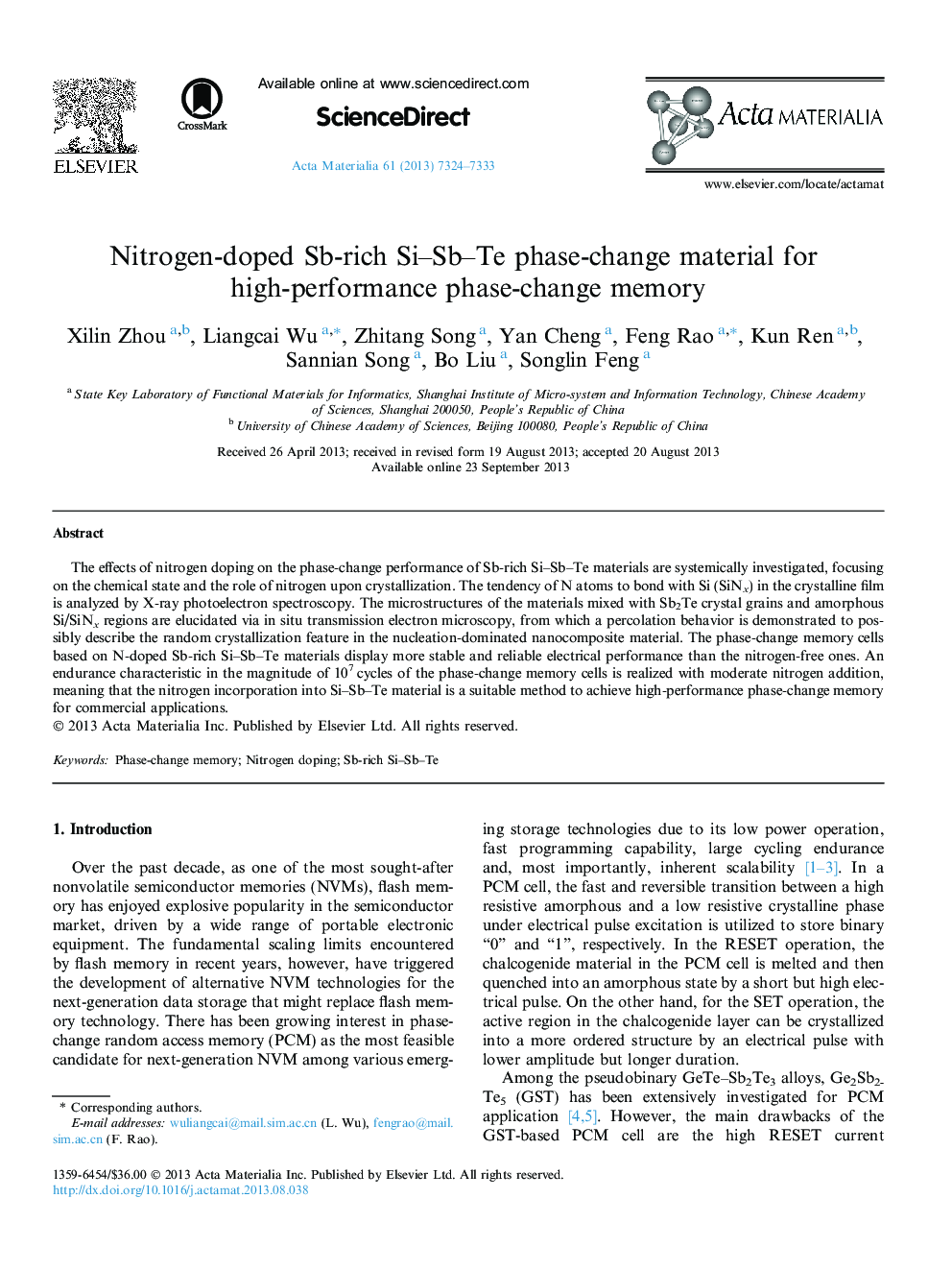| Article ID | Journal | Published Year | Pages | File Type |
|---|---|---|---|---|
| 10620242 | Acta Materialia | 2013 | 10 Pages |
Abstract
The effects of nitrogen doping on the phase-change performance of Sb-rich Si-Sb-Te materials are systemically investigated, focusing on the chemical state and the role of nitrogen upon crystallization. The tendency of N atoms to bond with Si (SiNx) in the crystalline film is analyzed by X-ray photoelectron spectroscopy. The microstructures of the materials mixed with Sb2Te crystal grains and amorphous Si/SiNx regions are elucidated via in situ transmission electron microscopy, from which a percolation behavior is demonstrated to possibly describe the random crystallization feature in the nucleation-dominated nanocomposite material. The phase-change memory cells based on N-doped Sb-rich Si-Sb-Te materials display more stable and reliable electrical performance than the nitrogen-free ones. An endurance characteristic in the magnitude of 107Â cycles of the phase-change memory cells is realized with moderate nitrogen addition, meaning that the nitrogen incorporation into Si-Sb-Te material is a suitable method to achieve high-performance phase-change memory for commercial applications.
Keywords
Related Topics
Physical Sciences and Engineering
Materials Science
Ceramics and Composites
Authors
Xilin Zhou, Liangcai Wu, Zhitang Song, Yan Cheng, Feng Rao, Kun Ren, Sannian Song, Bo Liu, Songlin Feng,
